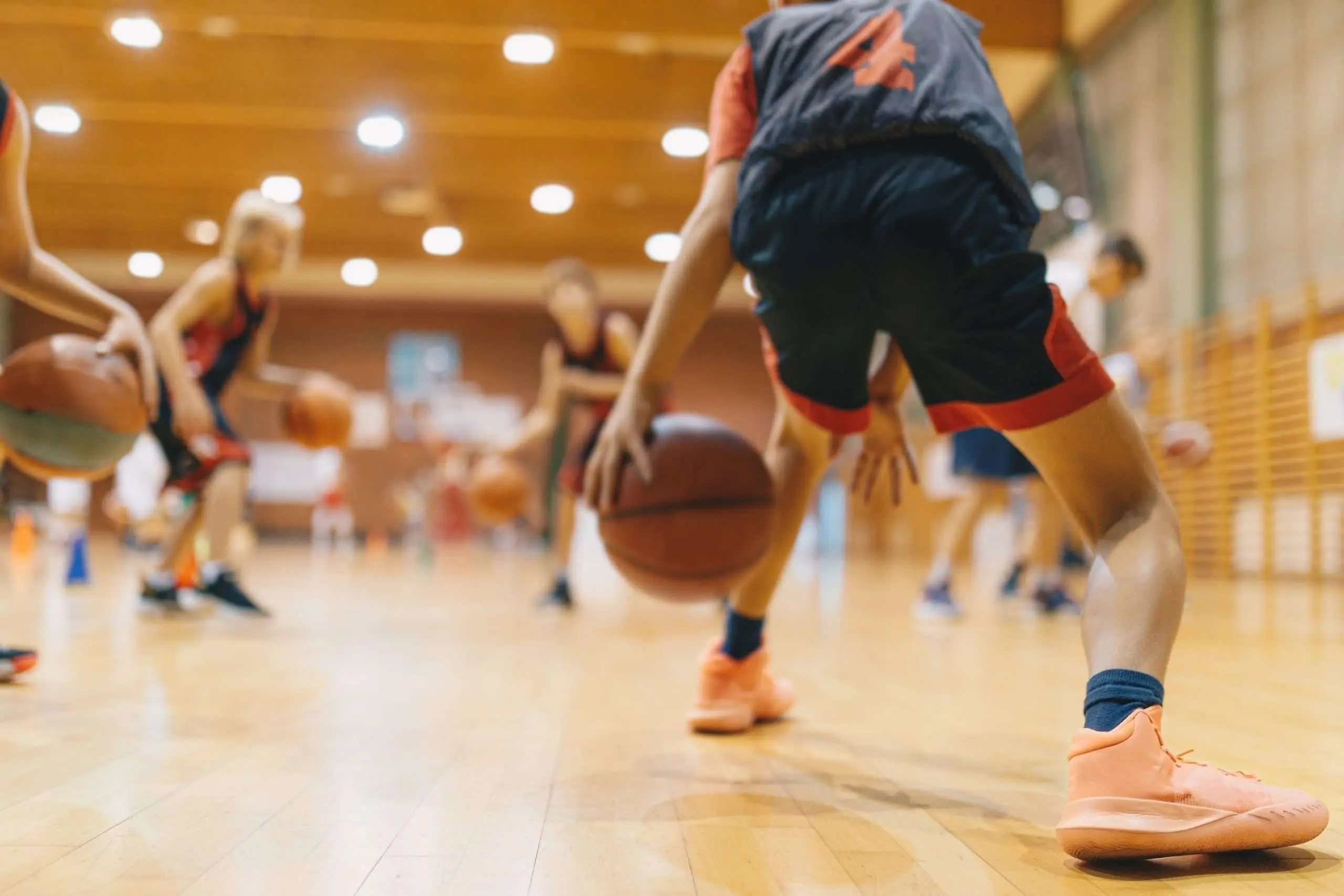
Basketball is a very physically demanding sport that boosts leg muscle mass. It is beneficial to your health, but it must be done correctly, or it could cause complications. This practice places a lot of strain on the joints. In particular, the infamous “dunks” put the legs and knees to the test. To play basketball safely, we suggest examining the knee injuries that basketball players suffer from and the preventative measures that can be taken.
Basketball and knee injuries
Among the most common injuries in basketball players, we find knee tendonitis (inflammation of the tendons around the kneecap), patellofemoral syndrome (irritation behind the kneecap), rupture of the anterior cruciate ligament (retraction of both ends of the ligament), or patella instability (external dislocation of the kneecap). Each can be extremely painful and often requires a several-week break from playing. Knowing the potential causes of these injuries is essential to understanding them.
Causes of basketball knee pain
Basketball is not a knee-friendly sport due to the frequent contact between players, the rapid changes in direction, the numerous jumps, the quick movements, the impulses, and the abrupt stops. As a result, people participating in the sport must undertake the following safety measures to prevent harm. The three most important ones are to warm up, stretch regularly, and choose the right equipment.
Furthermore, you should be aware that the condition of your feet directly affects how well your knees function and that the pain you experience is often a result of your feet. An example would be patients with foot injuries, which might cause knee pain due to compensating phenomena throughout the body.
Preventing injuries and knee pain in basketball
Here are some suggestions to help prevent knee problems if you regularly play basketball.
Eat healthily
Eating a varied and balanced diet is important for all sports. Make sure your body receives adequate protein, minerals, and carbohydrates. This includes a healthy daily consumption of fruits and vegetables and starchy foods, fish, meat, eggs, and dairy products. Remain hydrated at all times.
Use quality knee pads
Knee pads are crucial for avoiding knee injuries and pain. They help stabilize the knee, absorbing impact and protecting the joints. For them to do their job optimally, it is important to choose a suitable model and the right size (ligament, elastic or protective).
Use basketball-specific footwear
The well-being of a basketball player’s feet and knees are both significantly impacted by their shoes. The person’s weight, height, and any foot or joint issues must all be taken into consideration while choosing the proper footwear. Get sneakers with a “mid” upper that provides decent cushioning and a reasonably thick sole in general. They should not be too light or heavy. And, of course, make sure to pick a suitable size.
Warm up before exercising
Warm-ups are essential for avoiding injuries and preparing the body, and properly enhancing performance. Half-court pacing, unipodal balance, lunge walking, squats, jumping, flexibility, and plyometric exercises are a few examples of warm-ups that you can do.
Get a checkup as a precaution
Preventive exams are crucial for persons with foot abnormalities to avoid knee injuries. In addition, these examinations can help relieve the pain experienced by basketball players. If you speak with a medical expert, such as a FootNetwork podiatrist, they may be able to offer you some sport-specific advice to prevent or lessen the impact of several foot ailments.
Having a biomechanical foot examination has many benefits for a basketball player. This assessment enables the podiatrist to recommend athletic footwear and adjust the athlete’s posture. Their energy consumption while running will be reduced as a result of the posture adjustment, which will enable them to play better on the court. Additionally, this posture adjustment results in a more uniform distribution of impact points throughout the game, which lowers discomfort and the chance of injury.
Protecting your knees for a safer basketball practice
The sport involves the notions of enjoyment, performance, and safety; thus, having the right gear is crucial. Basketball is no exception to the rule. Remember to warm up, stretch, wear appropriate knee pads and shoes, eat a healthy diet, and play as well as you can while maintaining the health of your knees.
Make an appointment with your local FootNetwork clinic if you feel knee discomfort or spot an injury.